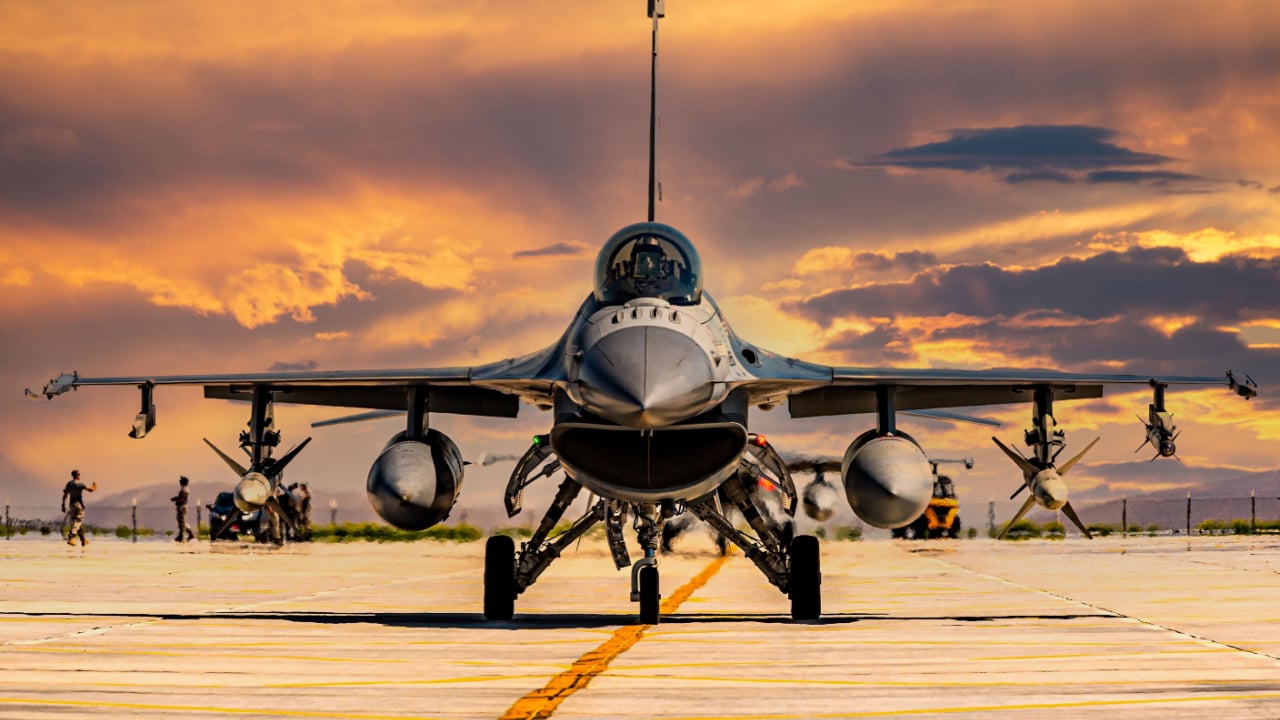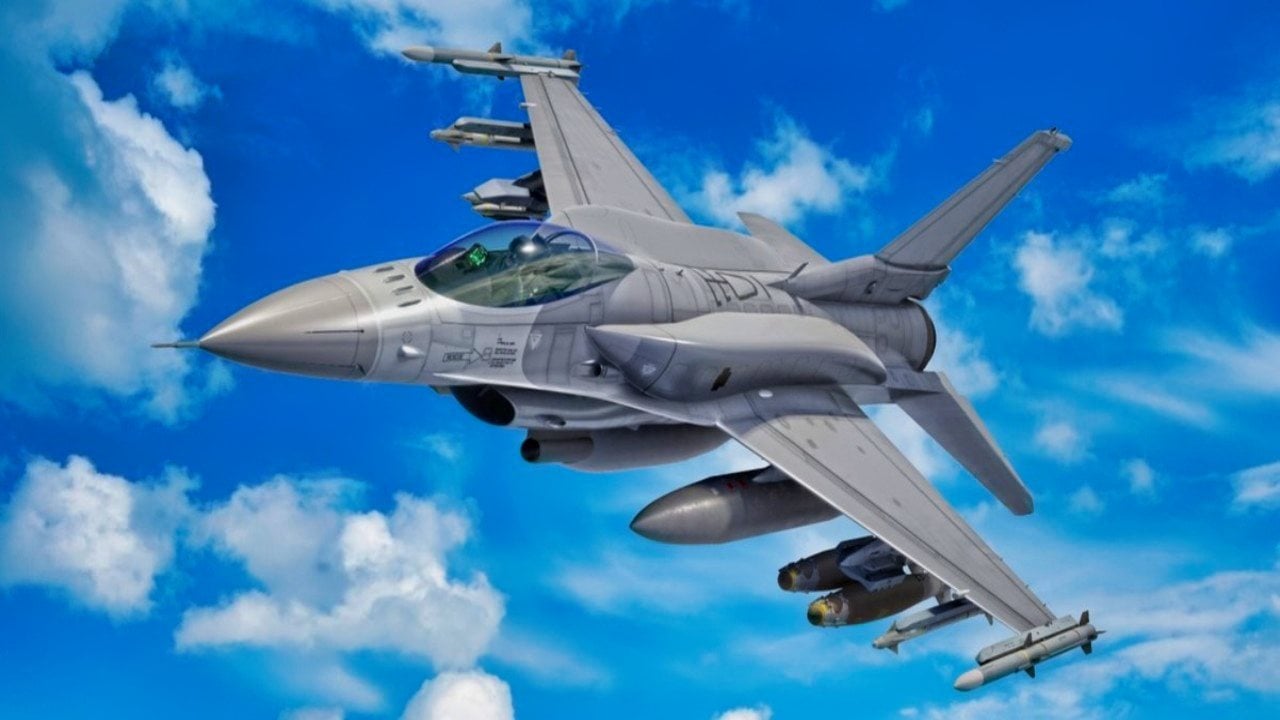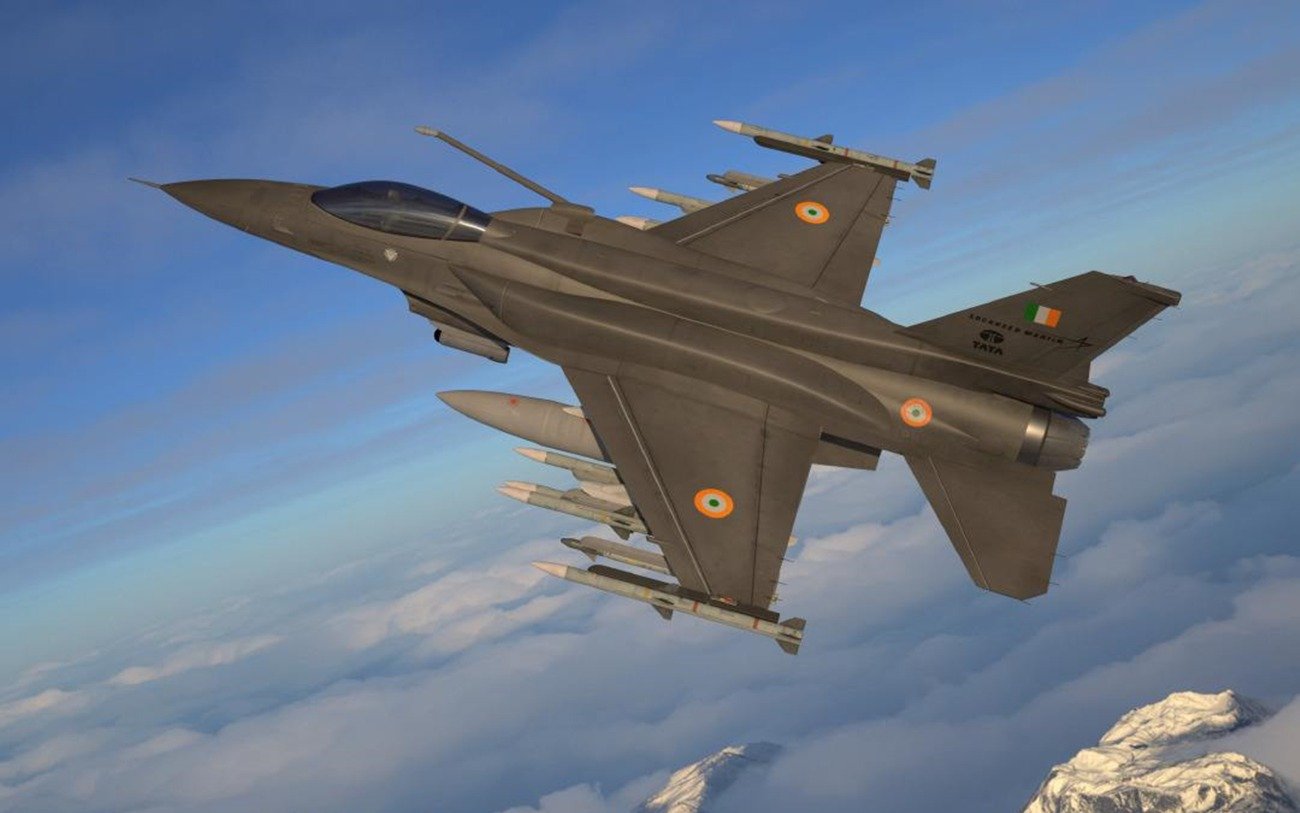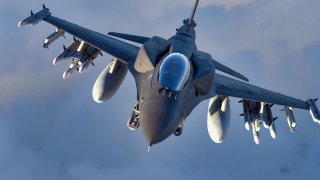F-21 Advanced Multirole Fighter: The Super F-16 That India Could Fly?
India’s F-21 fighter will reportedly boast even more tricks than the Block 70/72 airframes. In a video released by Lockheed Martin in 2019, the new variant appears to sport ten missiles- eight medium range, radar-guided AMRAAM missiles in addition to two AIM-9x Sidewinders. The fighter also featured an aerial refueling probe and a Snipe electro-optical targeting pod.
F-21 for India? For many years, India turned to Russia and the former Soviet Union to fulfill its defense needs. From Su-30 fighter jets to an array of main battle tanks and shells, Moscow has provided billions of dollars’ worth of military equipment over the last several years alone.
However, India has recently been turning to the U.S. on a more regular basis to acquire American military technology - specifically in the aerial space.
New Delhi has purchased the P-8 Poseidon and the AH-64 Apache attack helicopter and is currently looking to expand its aviation capabilities further. Many countries are competing to become India’s fighter platform partner. America’s F-16 Fighting Falcon, F/A-18 Super Hornet, Sweden’s Gripen, France’s Rafale and the European Eurofigher Typhoon are all up for grabs. In order to elevate its chances of being selected, U.S. manufacturer Lockheed Martin has decided to upgrade its offering.
In 2019, manufacturing powerhouse proposed to design an enhanced version of the Fighting Falcon at the annual Aero India exhibition. The new F-21 is reportedly the most advanced fourth-generation fighter platform to take to the skies. Lockheed Martin specially modified this platform for the Indian Air Force.
While the new jet may be sporting a different moniker, it is essentially and upgraded F-16.
Introducing the F-16 Fighting Falcon
Following the Vietnam War, the U.S. understood the need for an air superiority fighter and better air-to-air training for pilots. After Department of Defense funding was granted for General Dynamics and Northrop Grumman, the Advanced Day Fighter concept (F-XX) was created.
By the early 1970’s, requirements for an air-to-air day fighter with enhanced acceleration, range and combat abilities were outlined. The YF-16 prototype was designed by General Dynamics a few years later.
By 1976, the first F-16A Fighting Falcon took to the skies and was given the name “Fighting Falcon” in 1980.
F-16 Specs and Capabilities
The multi-role fighter platform is an equally capable air-to-air and air-to-ground airframe. Able to reach speeds of over 1,500 miles per hour with an operational ceiling of 50,000 feet, the F-16 was unparalleled when first introduced to service.

Ordnance-wise, the Fighting Falcon is truly lethal. The jet possesses nine hardpoints for weapons payloads and ordnance is launched from Raytheon LAU-88 launchers Oregon bomb ejector racks and MAU-12. The F-16 can carry an array of air-to-air missiles, including the AIM-9 Sidewinder, Raytheon AMRAAM, Raytheon Sparrow, Skyflash and MBDA R550 Magic 2.
Air-to-surface missiles that the Fighting Falcon can sport include HARM, Maverick and Shrike missiles.

How Do the Latest F-16 Variants compare to the F-21 Multirole Fighter?
Over the years, several F-16 variants have emerged in order for the platform to retain an edge over competitor jets. The latest Block 70 and 72 jets are considered to be the most advanced Fighting Falcons in the skies.
Both blocks have been fitted with an upgrade package that includes a modernized cockpit, advanced weapons, conformal fuel tanks and AN/APG-83 Scalable Agile Beam Radar, which give the platform fifth-generation capabilities.
According to Lockheed Martin, these jets will be able to fly for 12,000 hours, more than double the amount of time given to previous Fighting Falcon variants: “That means a highly reliable, readily maintainable jet of at least 40 years of service life for most air forces, with no expected extended structural repairs throughout that entire lifetime. The conformal fuel tanks provide increased fuel and added range, without sacrificing the aerodynamic performance of the jet, along with an improved performance engine.”
Will the F-21 be Selected?
India’s F-21 fighter will reportedly boast even more tricks than the Block 70/72 airframes.
In a video released by Lockheed Martin in 2019, the new variant appears to sport ten missiles- eight medium range, radar-guided AMRAAM missiles in addition to two AIM-9x Sidewinders. The fighter also featured an aerial refueling probe and a Snipe electro-optical targeting pod.
These enhancements would certainly make India’s potential acquisition of the platform a smart move.

In fact, Lockheed Martin has even offered to build an F-21 factory right in India to sweeten the deal. New Delhi wants the ability to create its own airframes down the line, so having this factory set up underway could support this goal.
While the F-21’s proposed abilities appear to be formidable on paper, India could still go in another direction. However, the country must act relatively soon to replace its rapidly aging fleets of Soviet fighters.
About the Author
Maya Carlin, National Security Writer for The National Interest, is an analyst with the Center for Security Policy and a former Anna Sobol Levy Fellow at IDC Herzliya in Israel. She has by-lines in many publications, including The National Interest, Jerusalem Post, and Times of Israel. You can follow her on Twitter: @MayaCarlin.
All images are Creative Commons.


